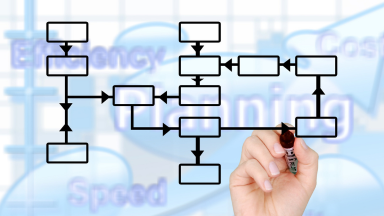Table of Contents

Taxonomy can be Taxing
Taxonomy originated from Greek, and the word “taxis” means organization or arrangement. Product taxonomy involves categorizing your products by type (think Shoes, Home, Electronics, Arts & Crafts etc) to enhance user navigation within your product catalog. It serves as a method for structuring all items on your e-commerce platform. It makes sense to taxonomize products […]
Taxonomy originated from Greek, and the word “taxis” means organization or arrangement.
Product taxonomy involves categorizing your products by type (think Shoes, Home, Electronics, Arts & Crafts etc) to enhance user navigation within your product catalog. It serves as a method for structuring all items on your e-commerce platform.
It makes sense to taxonomize products so that customers who like to browse online, are able to find what they’re looking for.
Where taxonomy becomes challenging for companies to manage include:
- Taxonomizing large supplier catalogs to match a retailer’s taxonomy.
- All retailers all have different taxonomies.
- Taxonomies change over time requiring retroactive updating.
Let’s break these down further:
Taxonomizing large supplier catalogs to match a retailer’s taxonomy
A distributor with many categories will have to know how each product fits into a retailers taxonomy for product content template completion.
This involves a review of each product and then manually checking the retailer’s site for where those products fit.
Our customers have shared that the task to label 6,000 products across 110 different categories, would be manual, likely done in a spreadsheet and take a week or two to complete (best case).
All retailers all have different taxonomies.
If you’re a brand, distributor or manufacturer with products that span many categories, it can become difficult to label your products with the appropriate category of your various retailer/marketplace partners.
As an example, BestBuy, Costco, Target and Amazon have variations in their taxonomies.
Amazon – Electronics/Televisions & Video
BestBuy – TV & HomeTheatre.
Target – Electronics/TVs & HomeTheatre
Costco – Home/Electronics/TVs
If you’re adding your television products to twenty retailers, you will have to know which taxonomy that they use, and then repeat the process for each retailer which can take weeks to complete.
Taxonomies change over time requiring retroactive updating.
As assortments build over time, so do the taxonomies. You may start with a category like Footwear and when you have enough product density, start expanding beyond men’s and women’s. For example, you may need slippers, boots, sandals, athleisure, runners etc.
The problem here is that when you add a new classification, you need to ensure that you re-label products into the best category. If you don’t, customers who browse your site may not find what they’re looking for. The impact could be lost sales, leading to overstock of clearance for those lost SKUs, a potentially huge financial risk.
How Atronous’s AI tackles taxonomy
Atronous’s AI agent takes the burden off of teams from having to manually map retailer taxonomy to supplied products.
Our AI learns the supplied products via artifacts like images, part numbers and text descriptions, then learns the taxonomy of the retailer partner.
Once AI training is complete, it begins to write the retailers taxonomy onto your csv template so that you can review and approve.
If the AI predicts that a product doesn’t fit into any of the retailer’s taxonomy, it will highlight those products to you for further inspection.
How our AI technology stack operates can be found here – https://atronous.ai/schematic-extraction-v0-1-0-architecture-enhancements-and-future-work/
The Results:
Atronous’s AI was put to the test recently to build a custom taxonomy for over 57,000 SKUs for a client. Atronous achieved 98.7% classification accuracy and reduced product onboarding time by 70%. By consolidating 200+ attributes into standardized templates and enriching missing data using AI, atronous enabled faster, more accurate listings across Shopify, Amazon, and other channels. This led to 5x faster listing velocity for long-tail products, improved SEO, and enhanced internal search and filtering. The solution now serves as the foundation for scalable catalog growth and marketplace compliance.


